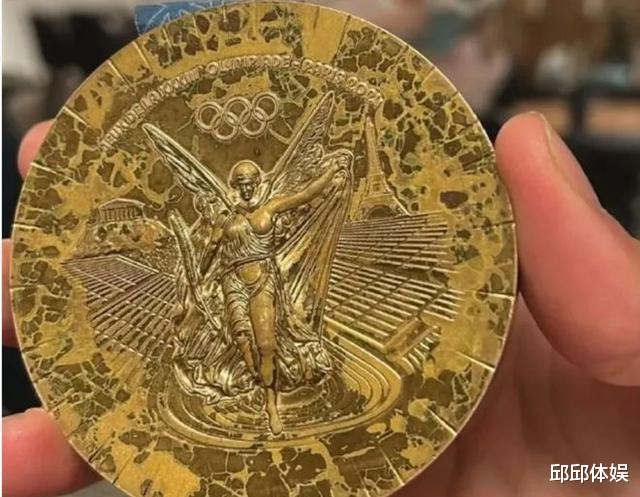Recently, foreign media reported a shocking news: as many as 100 medals were returned by athletes during the 2024 Paris Olympics. These medals, which should have been symbols of the hard work and heroic efforts of the athletes on the field, are now controversial due to quality issues. This incident has quickly attracted widespread attention and heated discussion around the world, not only casting a shadow over the image of the Paris Olympics but also raising deep doubts about the production and quality of the medals. During the Olympics, some athletes complained about the quality of the medals on social media. French swimmers Clementine Seguin and John N'Doye-Brouard posted photos of their bronze medals after winning, joking about their severe oxidation. The medals in the photos were covered with mottled rust marks, as if they had been washed by the vicissitudes of time, forming a stark contrast with the Olympics that had just ended not long ago. Clementine Seguin even described the medal as being like "crocodile skin," rough and dull, lacking the solemnity and holiness that an Olympic medal should have. As time went on, more and more athletes found similar problems with their medals. American skateboarder Nyjah Huston posted on social media less than 10 days after the Paris Olympics ended, complaining that his bronze medal was already rusted. He helplessly expressed that the medal looked like a veteran who had gone through countless battles and had lost its former glory. Nyjah Huston's complaint quickly resonated with netizens, who all expressed disappointment and dissatisfaction with the quality of…
Olympic Medals Rusting After Just 3 Months: Athletes Speak Out on Paris Olympics' Quality Concerns
It is well-known that the medals of the Paris Olympics are touted for their emphasis on environmental protection and sustainable development, while also showcasing France's profound cultural heritage. However, more importantly, there is a lack of funding. In terms of material and cost, the Paris Olympics have set a new low. According to the medal production process of the Paris Olympics released by Oxford Economics ↓↓↓ Gold Medal: Mainly made of about 523 grams of pure silver, with an outer layer of 6 grams of pure gold plating, weighing approximately 529 grams in total. According to estimates by the Oxford Economics Institute, the material value of each gold medal is about $1027. Silver Medal: Entirely crafted from about 525 grams of pure silver, with a material value of about $535. Bronze Medal: Weighing about 455 grams, made of an alloy of copper, tin, and zinc, with a material value of about $4.6. The official Olympic website reports that at the center of each medal is embedded a hexagonal piece of iron taken from the original ironwork of the Eiffel Tower, symbolizing France's cultural heritage. These iron pieces have been meticulously polished to restore their original color and printed with the emblem of the Paris Olympics. The front design of the medal features radiant lines surrounding the central iron piece, echoing Paris' reputation as the "City of Light." Additionally, the production of the medals adheres to the regulations of the International Olympic Committee, ensuring that their size and quality meet the standards. However, it turns out that the rust from the…

